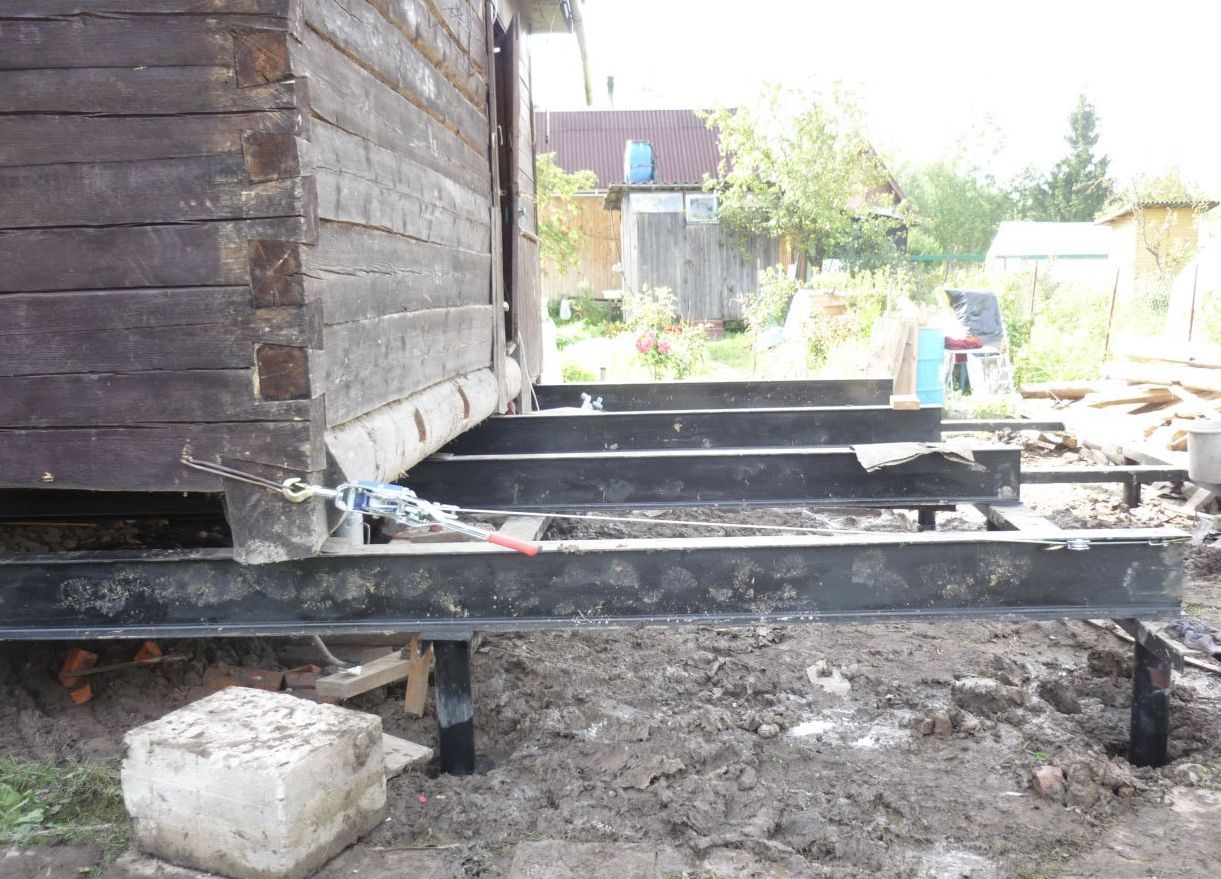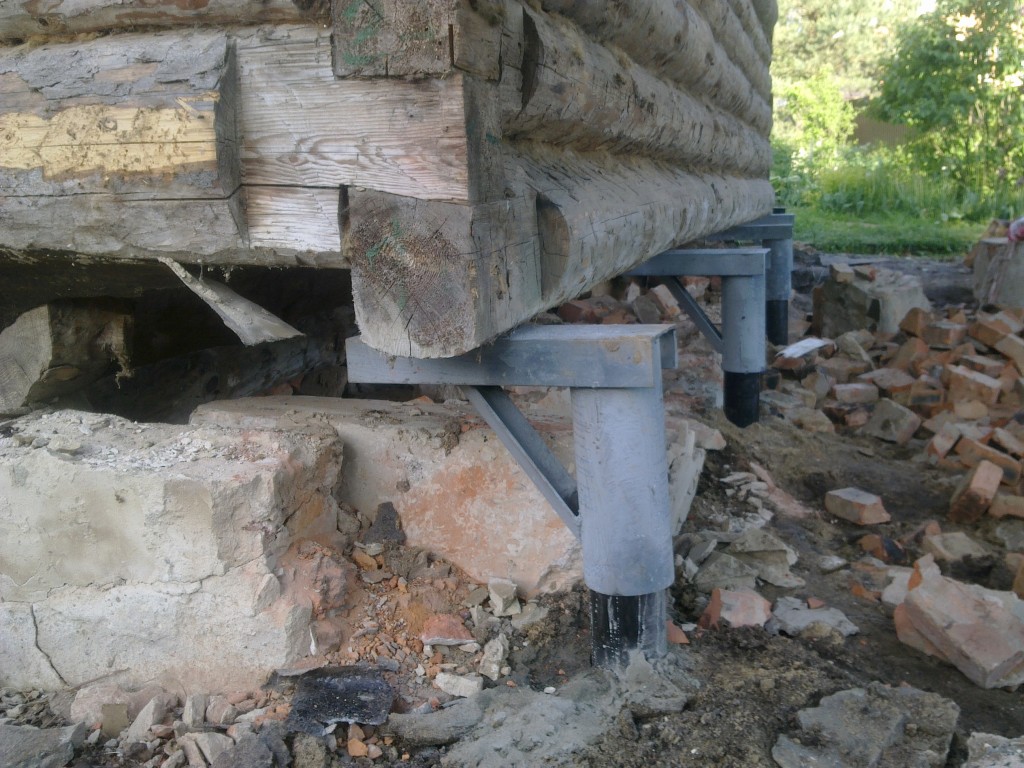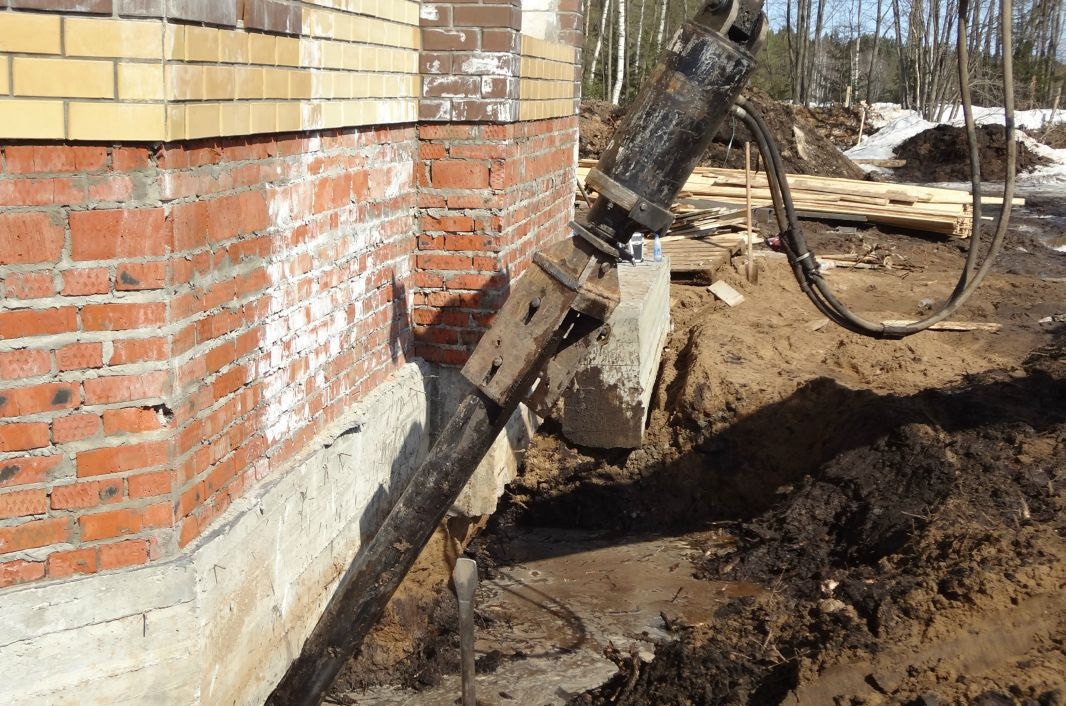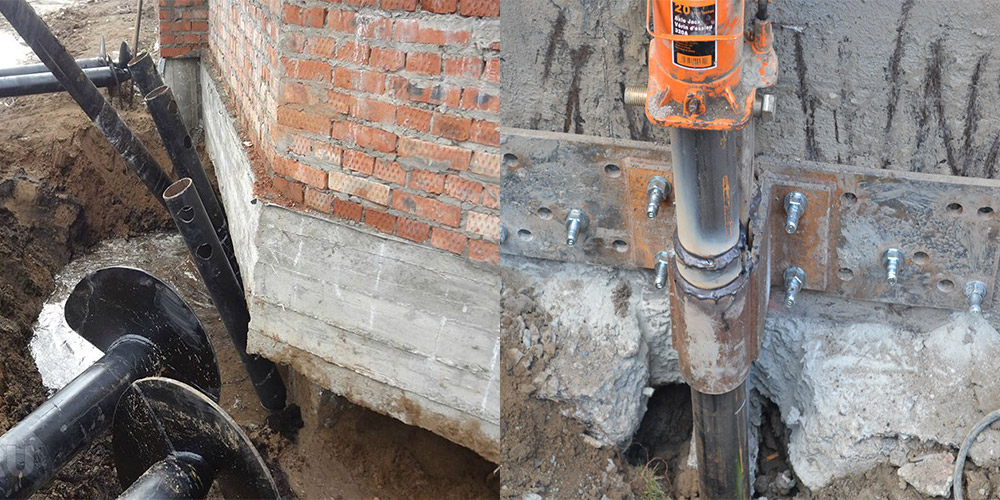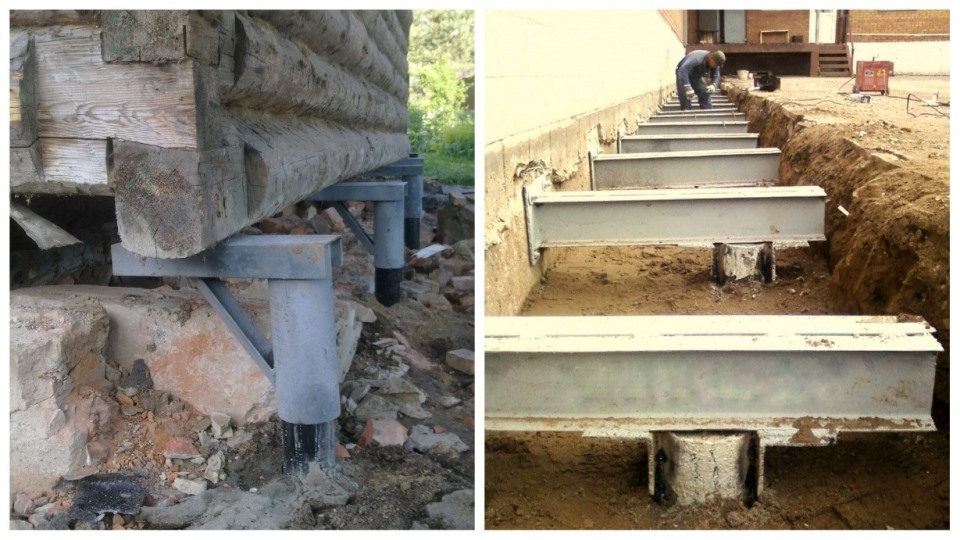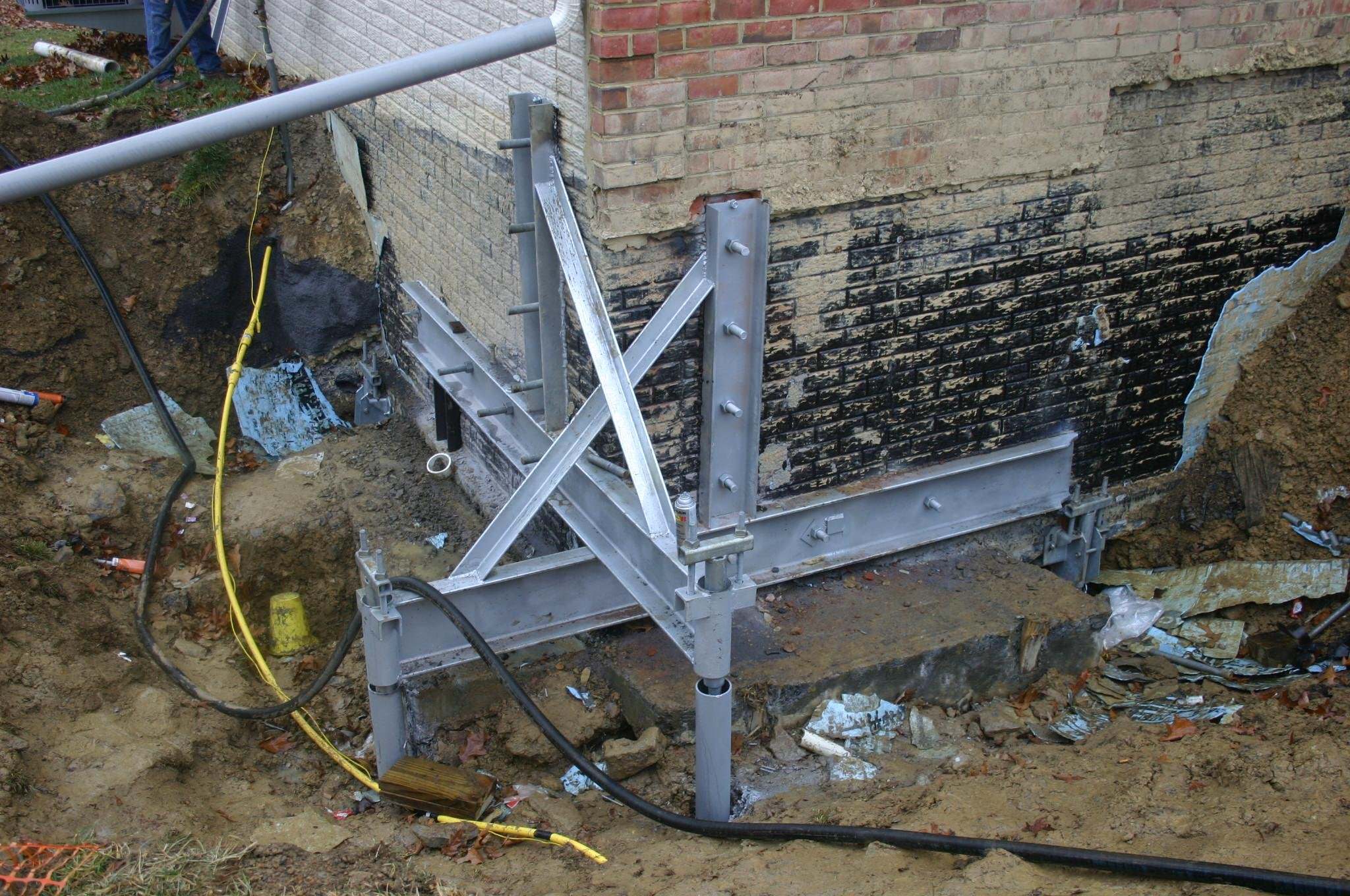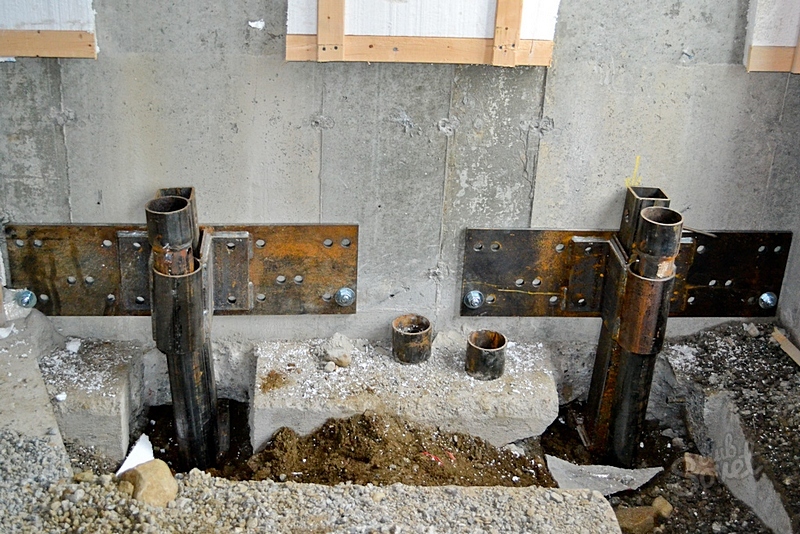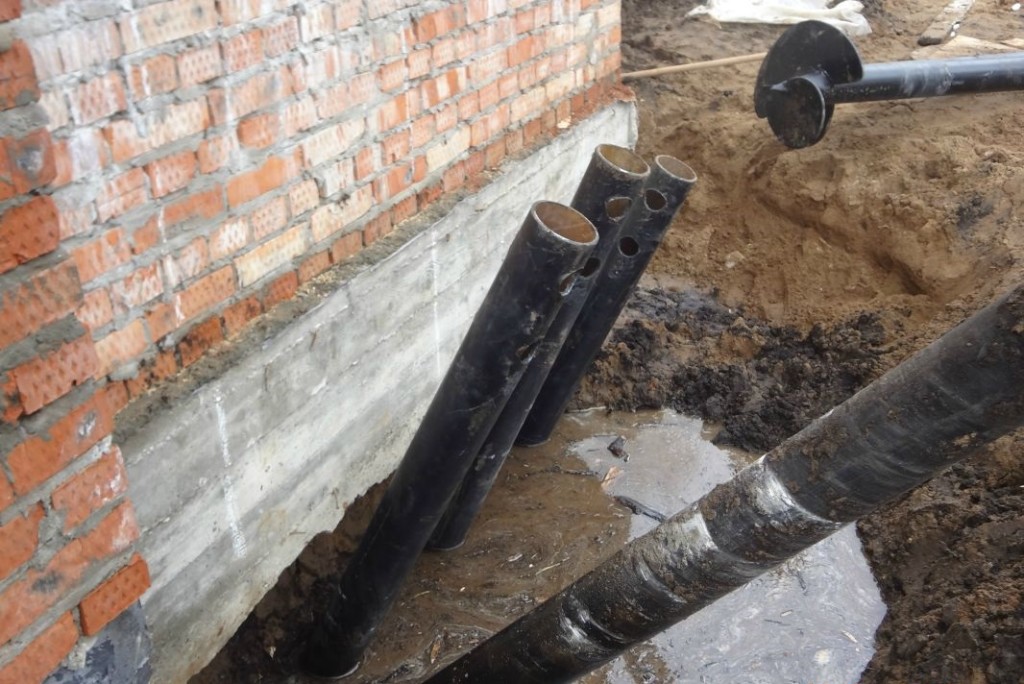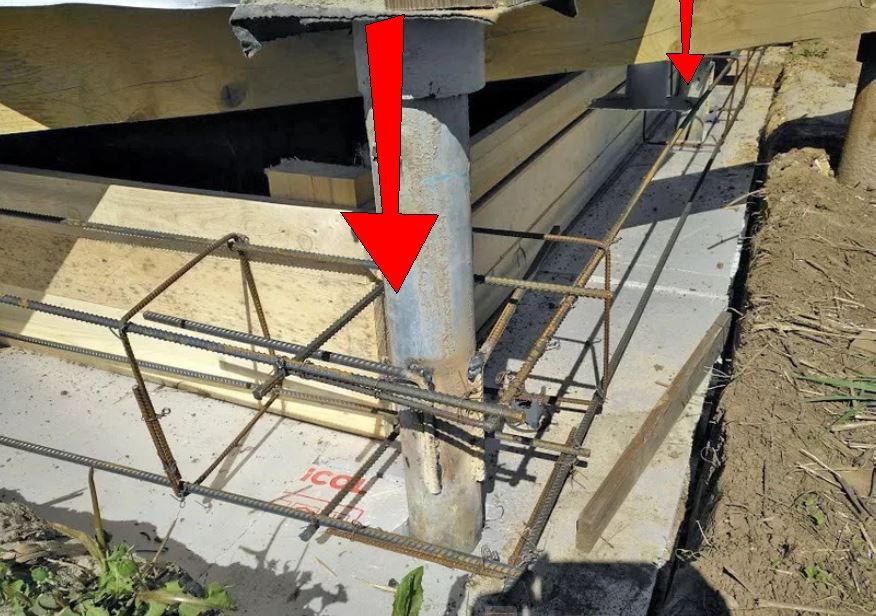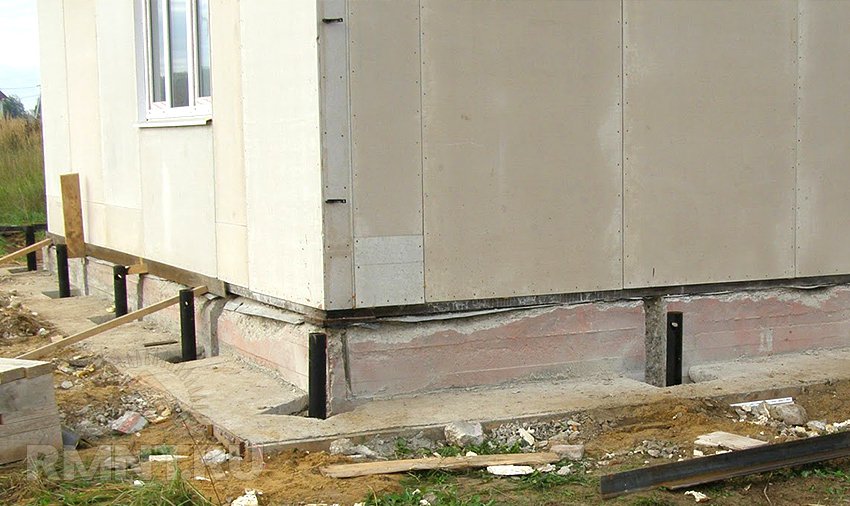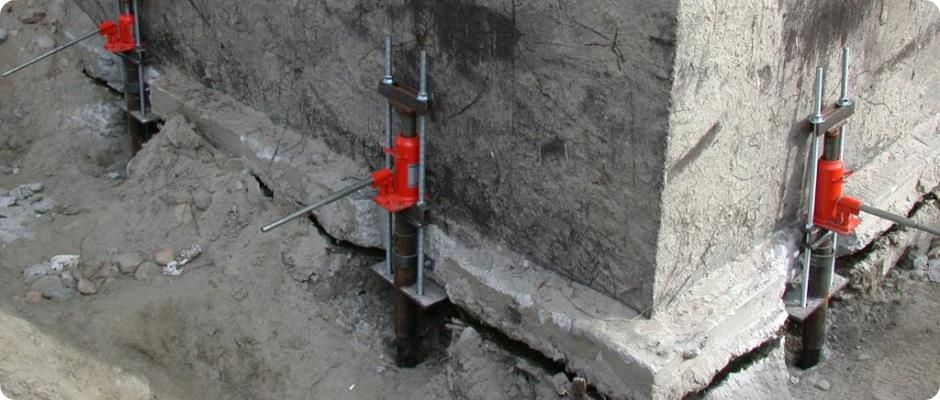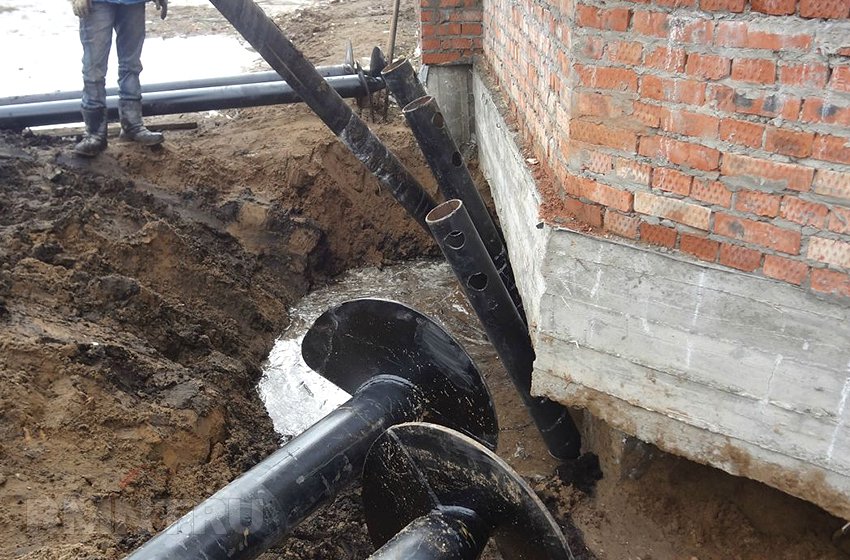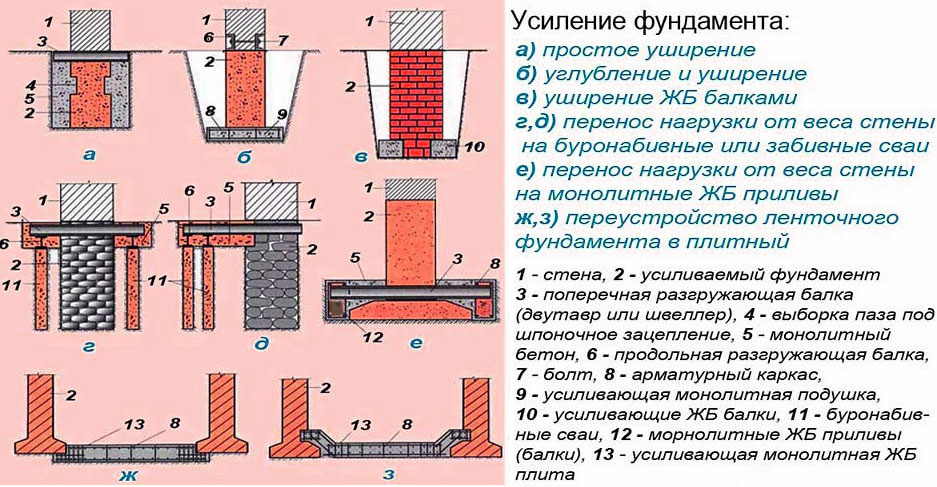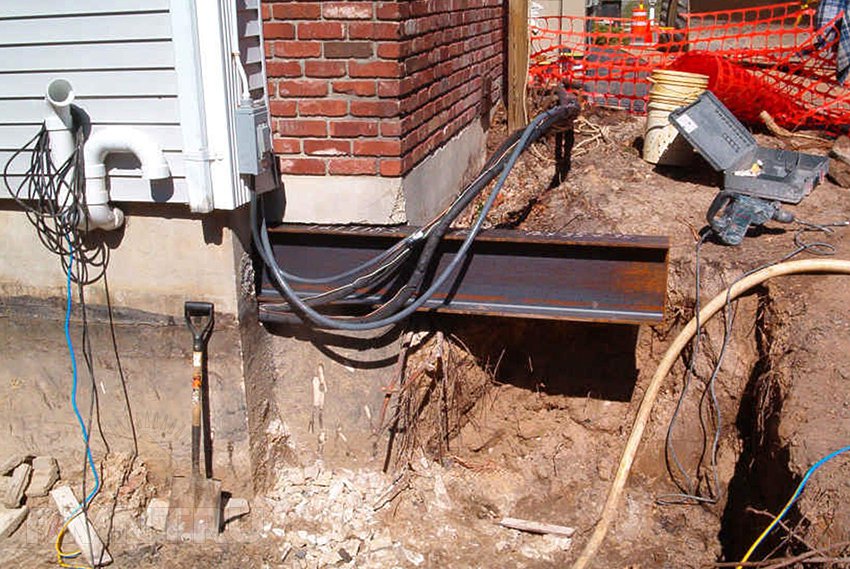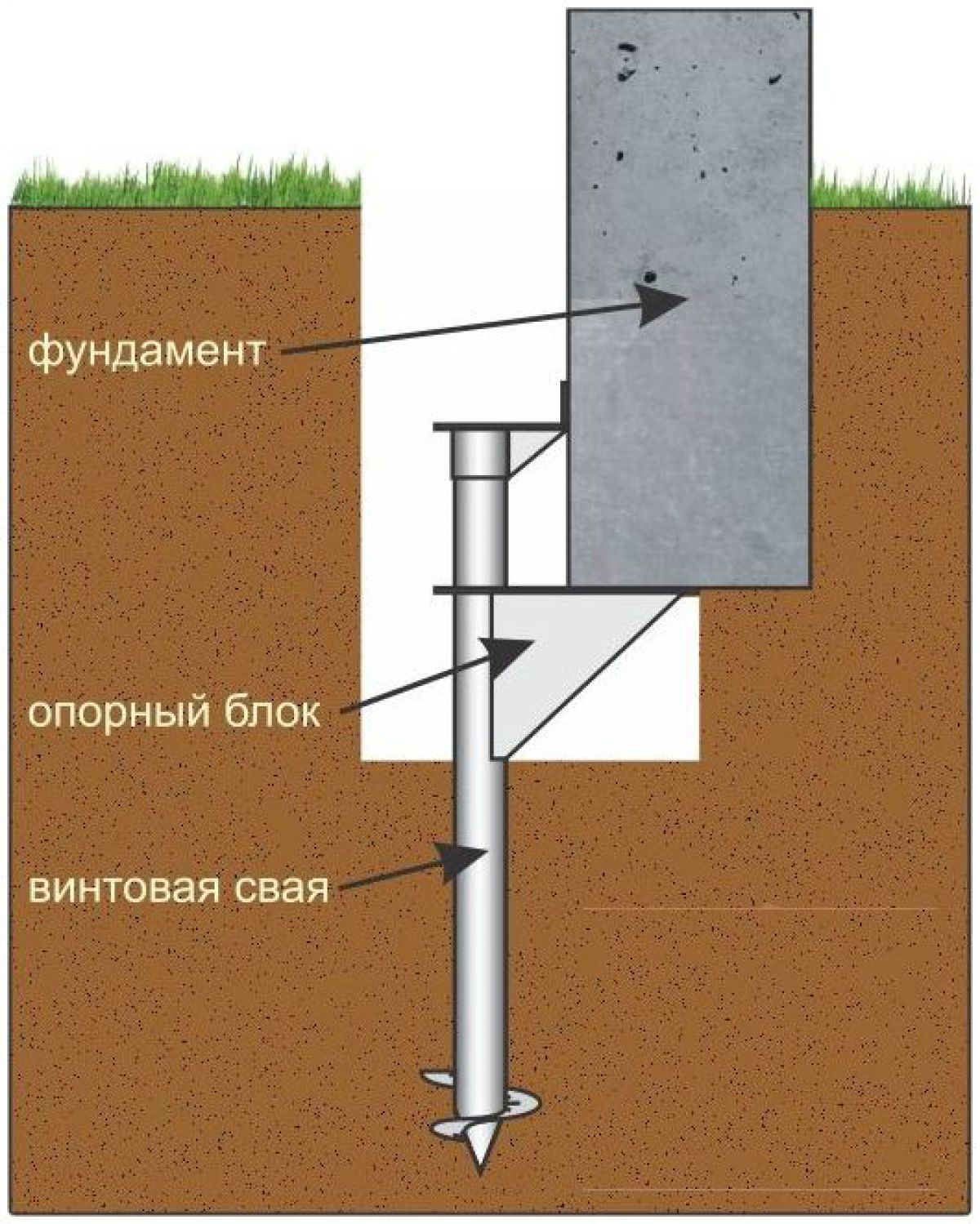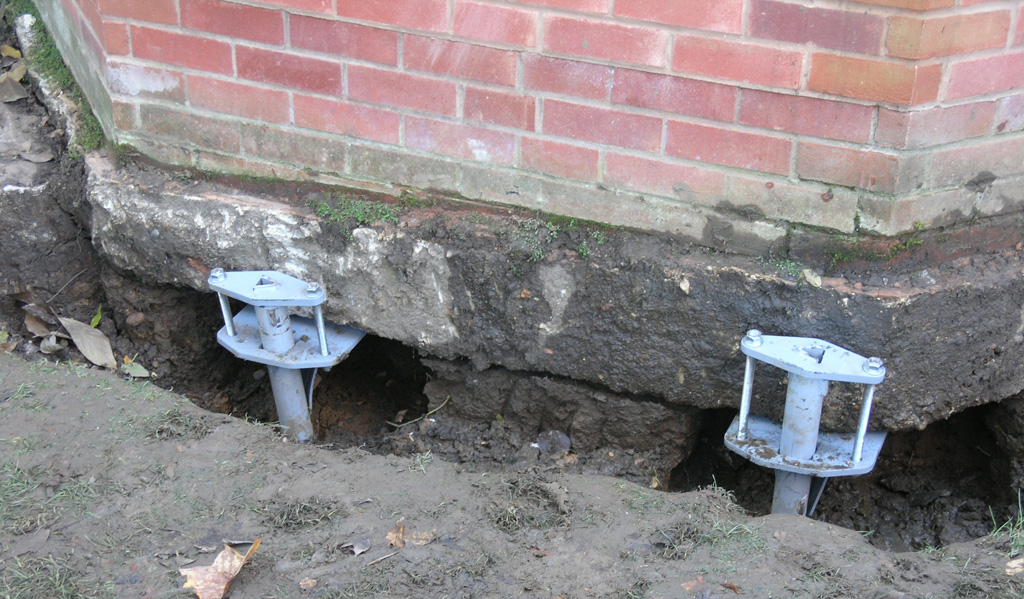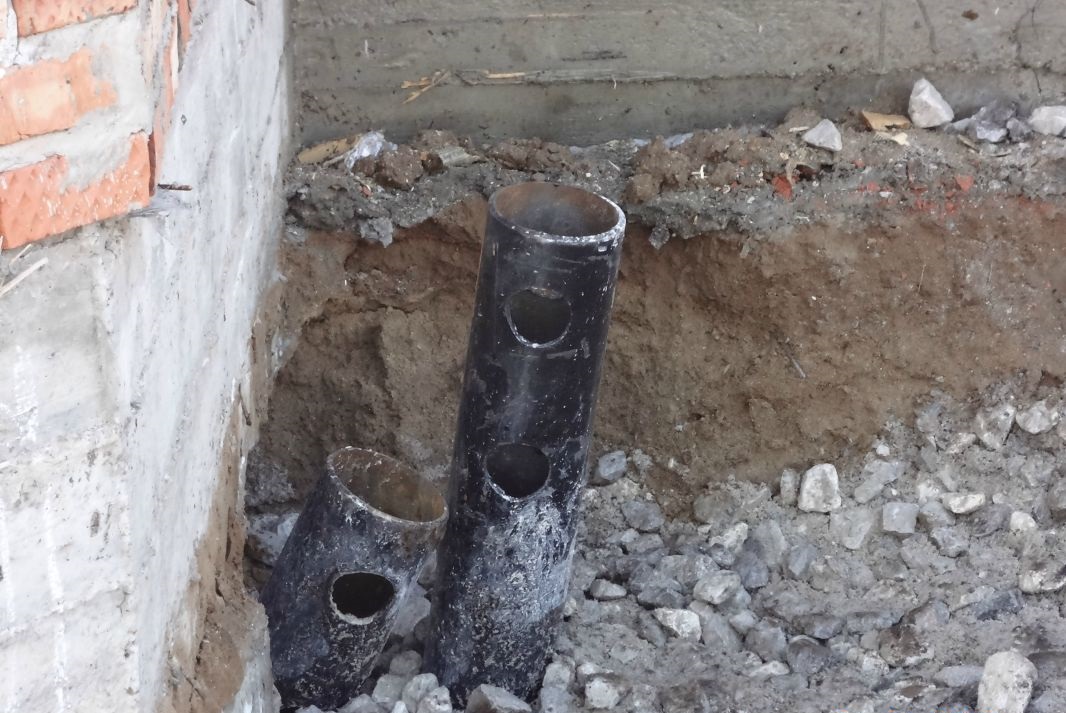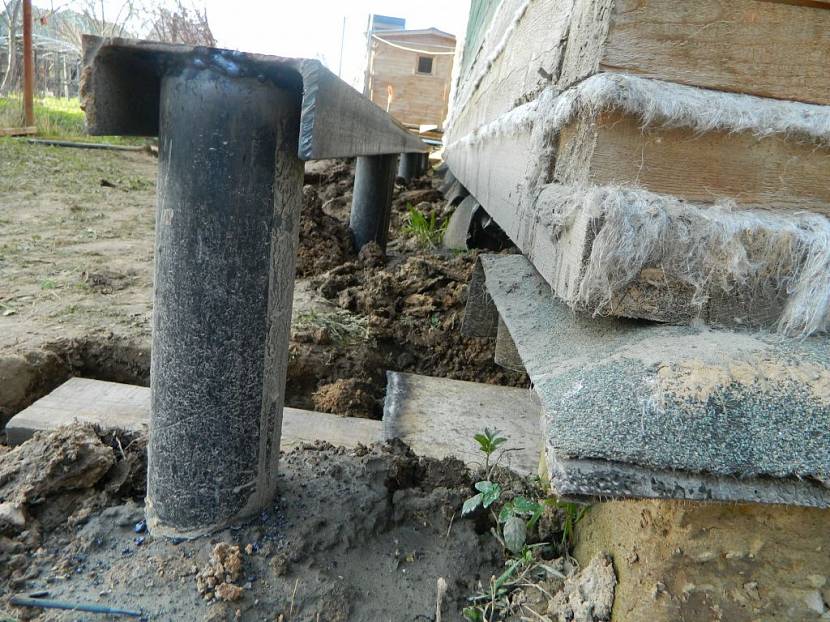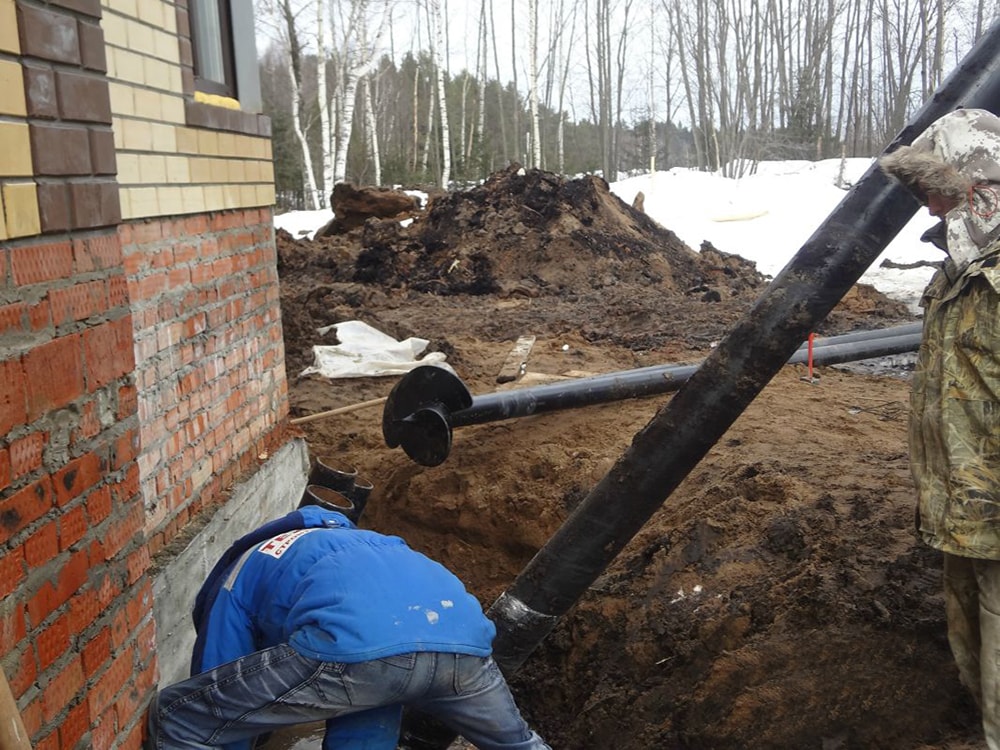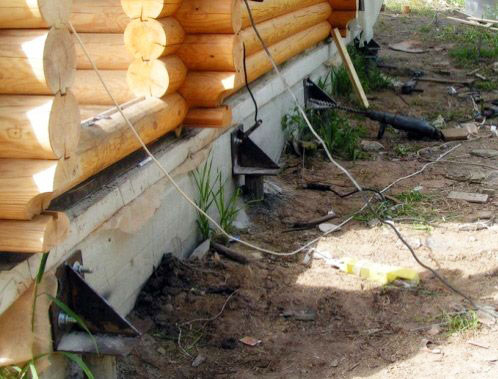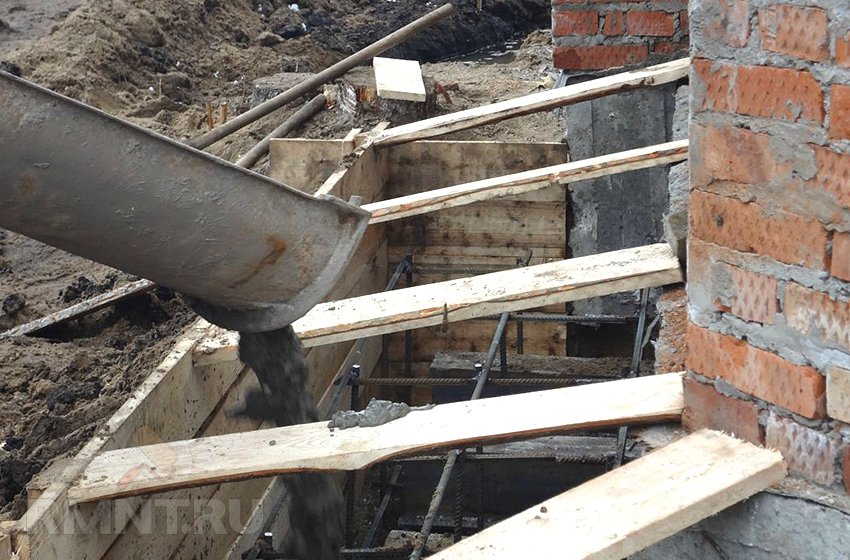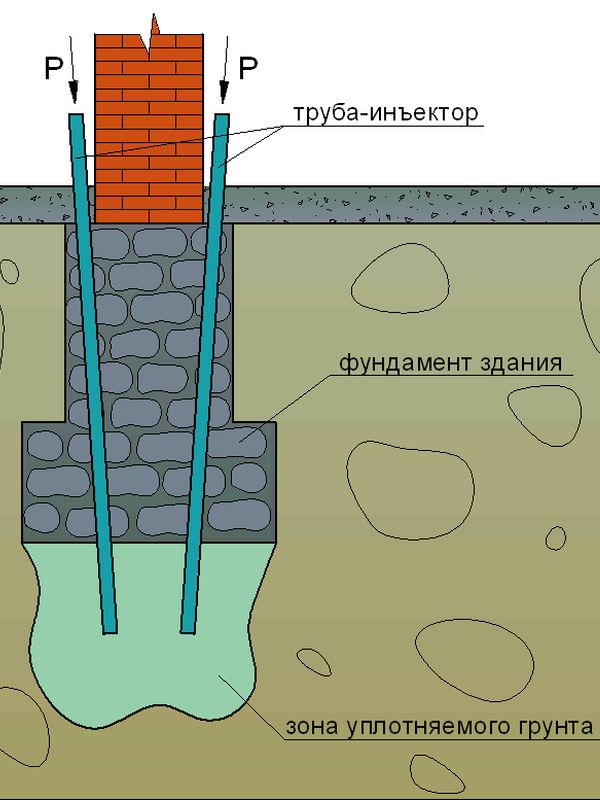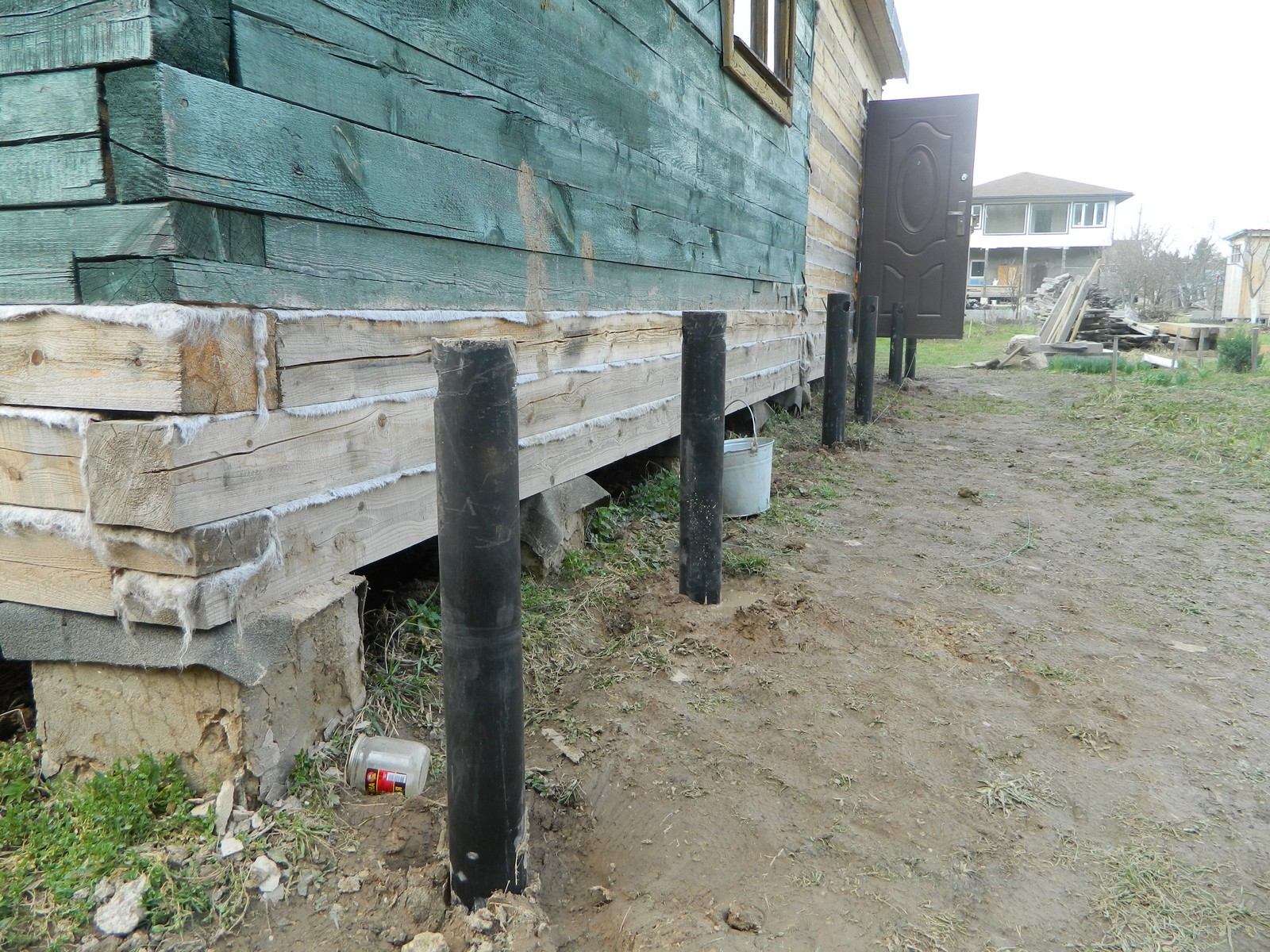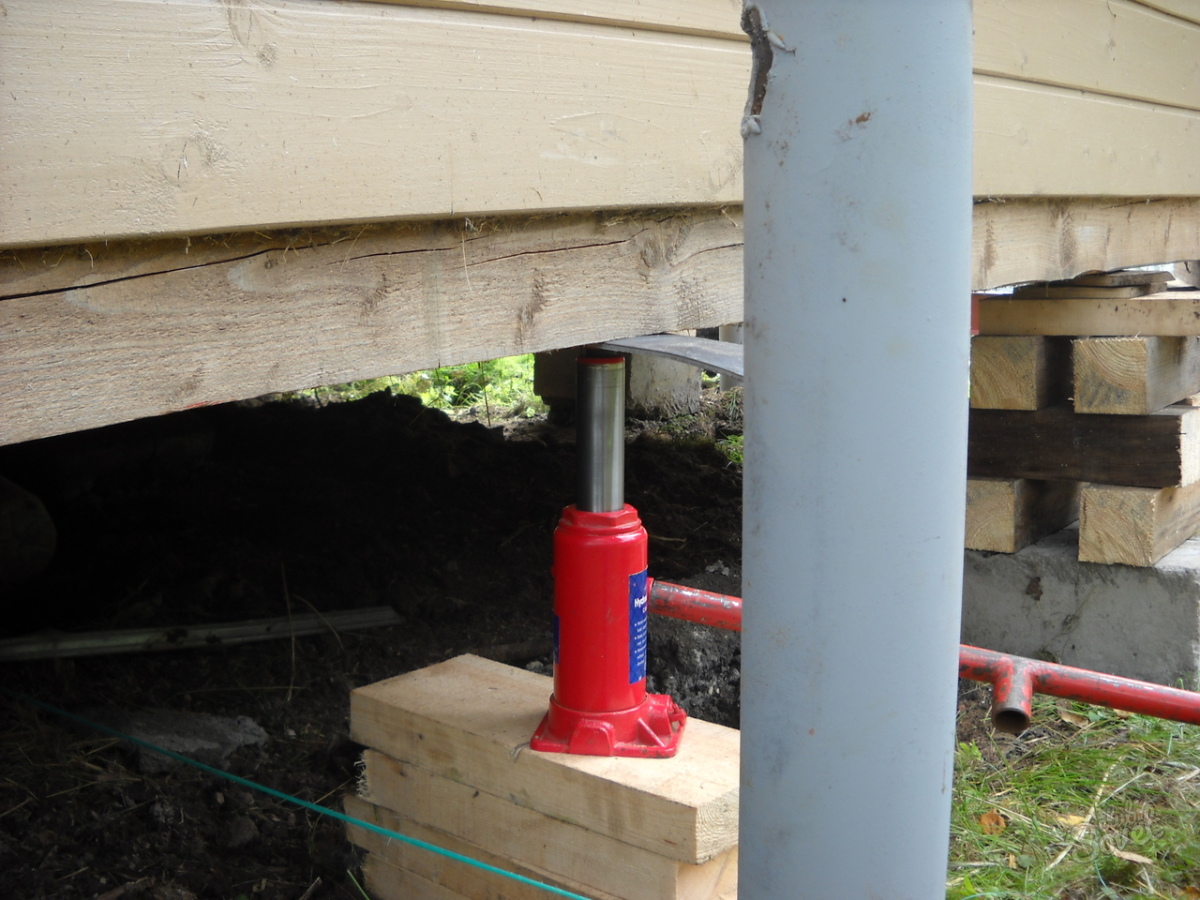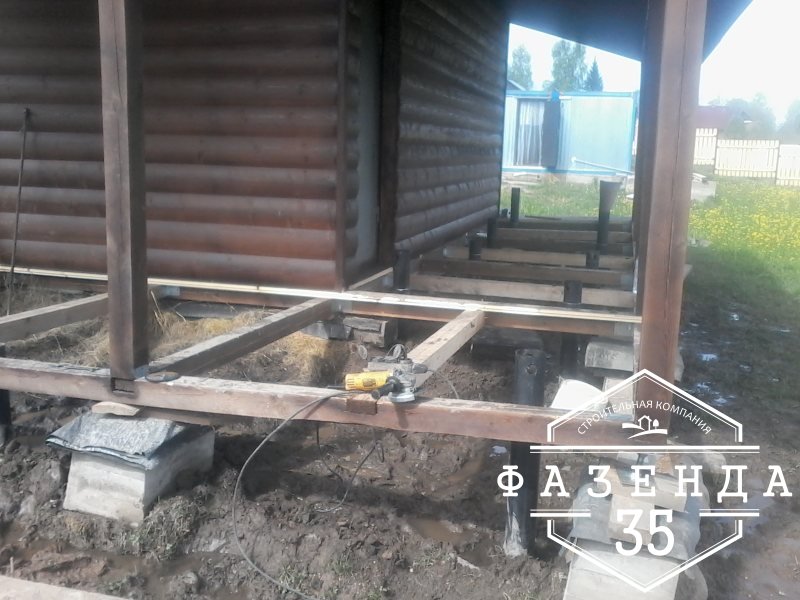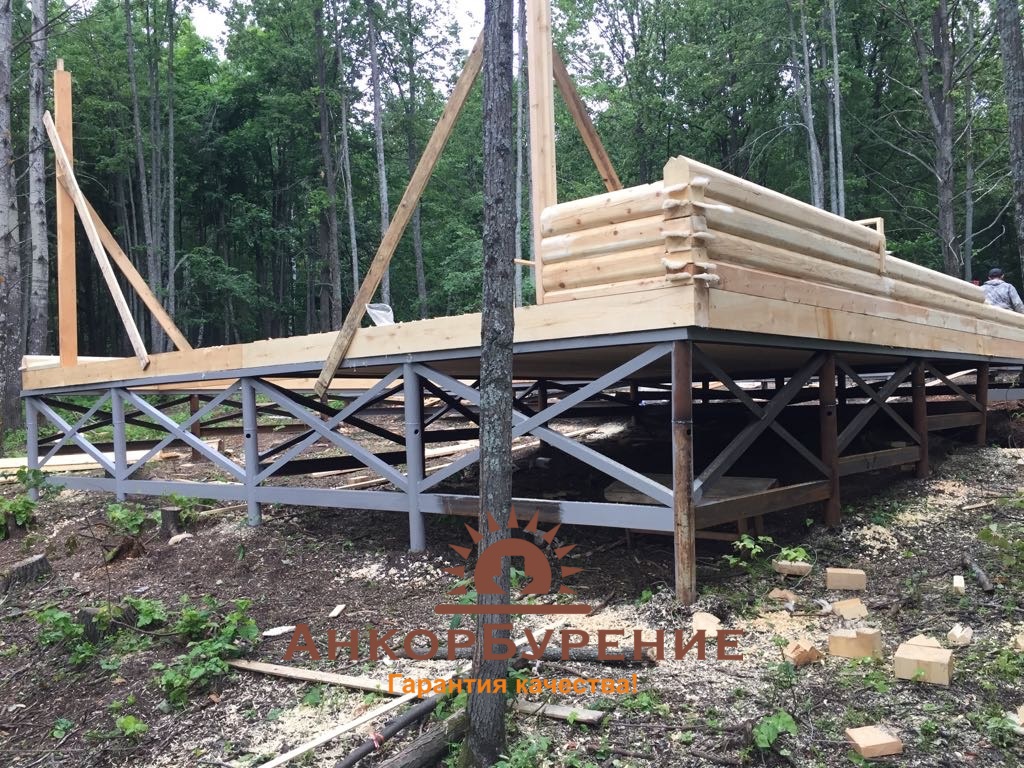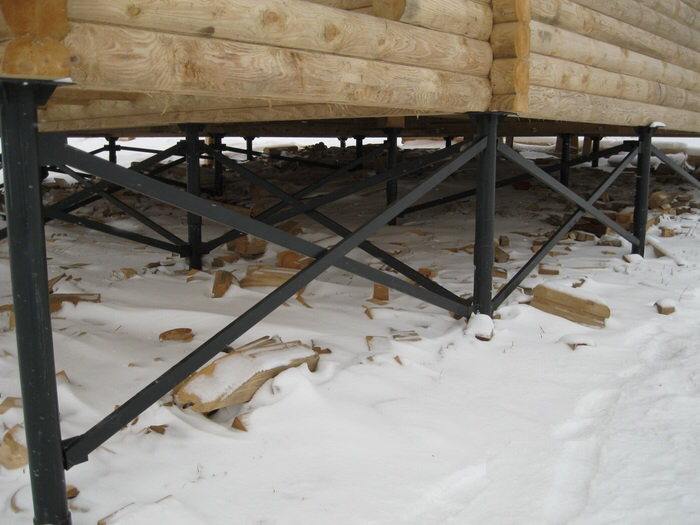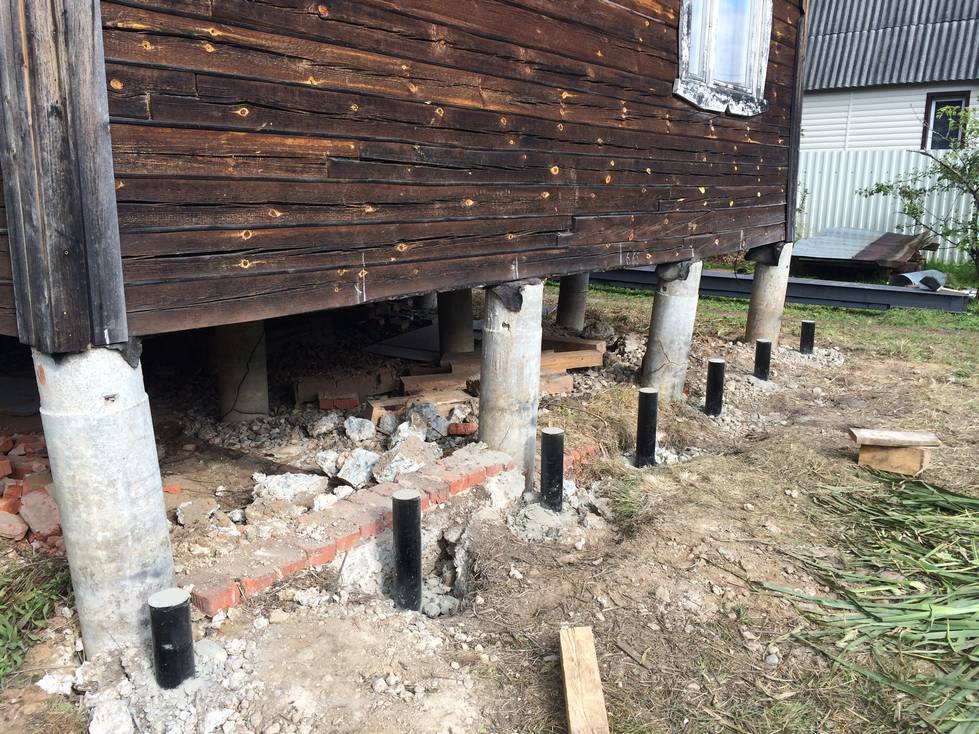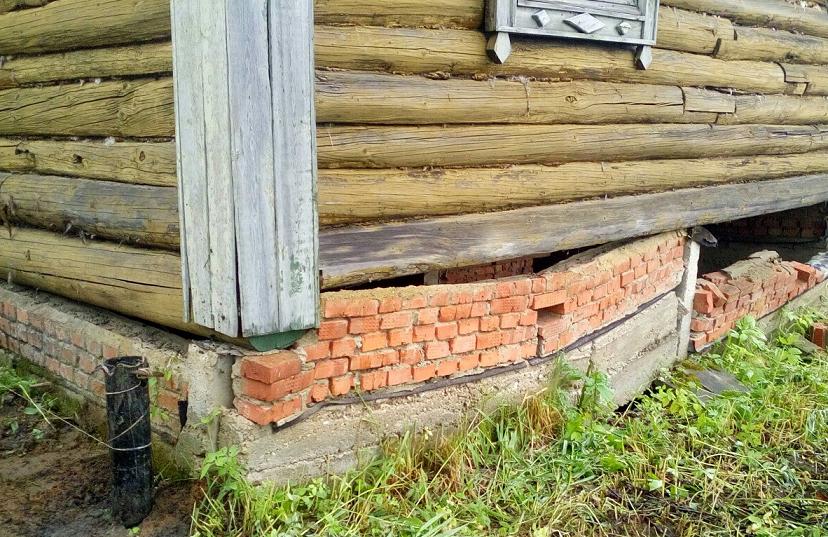What to do if significant foundation failure occurs
In this case, the foundation as a whole should be strengthened. To consolidate the soil, which has exhausted its bearing capacity, methods such as cementation, resinization, silicification and firing are provided.
Based on the type of soil, you should decide on the most optimal way to perform the work. For example, silicatization is relevant where it is necessary to strengthen large sandy or loess-like soils, resinization is good for fine sands, and cementation for gravel or clay-type soil.
These methods are characterized by identical technology and differ from each other only in the composition in which the solution is injected into the soil. Siliconization, for example, is characterized by the use of a sodium silicate solution, which, in contact with the soil, "turns" as a result of a chemical reaction into a solid, monolithic rock. By analogy, the same effect occurs during resinization, where urea resin acts as a solution, to which hydrochloric acids are added.
To deliver the solution to the ground, special injectors are used, which are pipes driven into the ground and having perforations at the ends. To drive pipes to a depth of 6 to 8 meters, pneumatic hammers are used, and they are extracted using pile drivers or hydraulic jacks.
Distinctive features are characteristic of the firing technology, when a fuel mixture is placed in the soil, where it burns. Since compressed air is injected during the work, high pressure remains in the well - about 5 MPa. The injected air plays a key role in the formation of hard rock layers ranging from 4 to 30 meters thick. It all depends on how the firing should be carried out and in what amount the fuel mixture is used.
How to strengthen the structure
There are several ways to solve the problem:
- build a new foundation next to the house for later relocation;
- reanimate the existing design.
Lifting and moving the house is possible, but there are not always means and conditions for this. In addition, full-fledged foundation construction is an expensive and time-consuming process.
Much more often they make the decision to raise the house with jacks and strengthen the screw structure:
- add screw piles;
- strengthen old supports;
- add bored piles;
- pressed piles;
- bore injection method.
Reinforcement with screw piles
The easiest way is to install additional screw piles close to the existing foundation. To do this, you have to put the house on jacks, here it is recommended to contact a specialist.
Screw piles are screwed in as close to the house as possible along the perimeter and under the inner walls, a new grillage is mounted on them - a steel channel-channel or I-beam (it rests on the existing strapping). Thus, the building sits on a new support. After that, the base is insulated and finished.
New strapping on old piles
Strengthening the foundation on screw piles for a house raised above the ground, you can use the spatial reinforcement method:
- the house is raised;
- all piles are tied together with a profiled pipe or steel angle, which connect all piles, including internal ones;
- the house is seated on a new harness.
The advantage of the method is its relative simplicity and low cost. The most important thing is to create a lattice frame that redistributes the load on the supports.
Bored piles
The pile foundation can be reinforced with concrete piles, which are installed directly under the house.
- for convenience, the house is raised, but you can do without this stage;
- make a preliminary calculation of strength and determine the step of additional supports, their location;
- holes are drilled in the ground in designated places;
- mount the reinforcing cage and pour concrete M300-M400 into the formwork.
After that, they wait for the concrete to harden (from 7 days, depending on the conditions), then install the grillage. By the way, you can make a monolithic reinforcement:
- bored piles are installed around the entire perimeter of the house, dismantle the old grillage;
- between the supports, formwork is made for a concrete grillage, the reinforcement of the piles is tied up with a beam frame;
- concrete solution is poured.
The result is a new concrete pile foundation.
Press-in piles
We will not describe this method in detail, since it is similar to the arrangement of new supports, which we talked about earlier. In this case, instead of new screw piles next to the foundations, new concrete supports are pressed in by means of special machines, on which a new grillage is also installed.
This method is unpopular but takes place in construction practice.
Drilling method
The most expensive, but also an effective method of strengthening the foundation is boring.
The calculation of the structure is preliminarily carried out. According to the new project, in the given places, a puncture is carried out on both sides with special installations at an angle of at least 30 ° as follows:
- the puncture is carried out from the outside and inside of the foundation, forming an X-shaped support;
- concrete solution is pumped under pressure;
- reinforcement is used to tie up piles and grillages.
The drilling process is very complicated and requires adherence to a number of rules and the use of equipment.
Is amplification always necessary?
So, one of the most common reasons why the foundation needs reinforcement over time is the elementary absence of a blind area around the perimeter. As a result, the foundation rises seasonally invisibly to the eye due to the heaving of the soil - and then the side, where there is less snow in winter, and this is the southern or, as the people say, windward, descends more. What to do in this case? First of all, align the bath, tying it around the perimeter with additional beams. The next step is to make a temporary blind area: dig shovels on the bayonet, lay polyethylene and at least sprinkle it on top with sand. If after that it turns out again in the spring that one side of the bath has sagged - then you really need to strengthen its foundation. The blind area will also not help if there is a high level of groundwater in a given area - then only a pile foundation with a depth of up to 2 meters will save.
Sometimes a crack in the strip foundation also appears in a log bath - if, for example, there was no reinforcing cage in the concrete or it was made incorrectly. In this case, you need to wait: if the crack does not expand (and special beacons are used to check this), then you can leave everything as it is - this is not scary for logs. But otherwise, you really have to strengthen.
If there are all indications for strengthening the foundation, do not put it on the back burner. It is better to spend the whole summer on such a painstaking and difficult job, but for many years still be calm about the strength and reliability of your steam room.
Expert advice
Thinking about the question of how to strengthen the foundation of a house, you need to take into account the following factors:
- You can reduce the pressure on the foundation of an old wooden house by lowering the level of heaving of the soil. For this, a sand pillow is erected under the base, and a clay belt is placed around.
- Soil mobility will be significantly reduced if a drainage system is placed around. This will increase the density of the soil, thus increasing the strength of the base.
- Warming the basement and foundation will significantly slow down the destruction process and increase the service life.
- Sealing the junction of the blind area will protect the base from precipitation.It is possible to reduce the amount of moisture penetrating into the soil around the foundation by means of a system of gutters located on the roof.
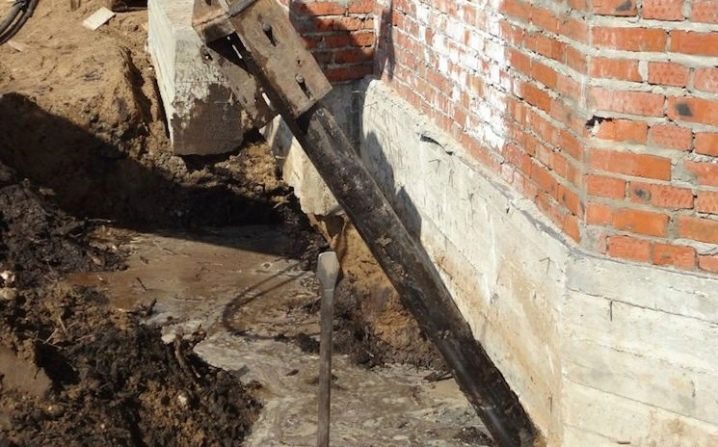
If the damage is small, and the sediment of the base is completed, then you can limit yourself to filling the cracks with a cement solution. In case of severe shrinkage, it is necessary to eliminate the cause of its appearance. In particular, if the deformation of the foundation was provoked by the leaching of the soil, then cement mortar must be pumped into the formed voids. Wells are made at the base of the house and they are filled with solution under high pressure. Such a layer perfectly reinforces the base and has waterproofing properties.
To strengthen the shallow strip foundation (MZLF), experts advise using screw, bored or bored injection piles. If there is no equipment for drilling and injection, then the work will have to be done manually.
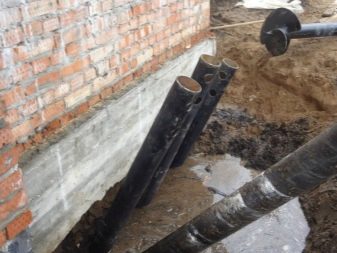
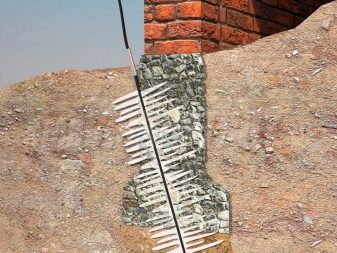
To do this, soil is dug in problematic areas or around the entire perimeter of the foundation of the building. The ditch is filled with masonry or in-situ concrete. It is necessary to close up cracks in the house, especially with brick locks, after the settlement process has stabilized. If the house has not yet sat down, beacons are installed in the places where the house or foundation has cracked to establish the time of completion of the precipitation.

Each method of strengthening the foundation is developed individually, taking into account the results of inspections and design information. Owners of private housing construction need to remember that strengthening work can be carried out on their own only after a thorough examination, obtaining the results of the examination and all the necessary conclusions.
For information on how to strengthen the house and avoid cracks, see the next video.

